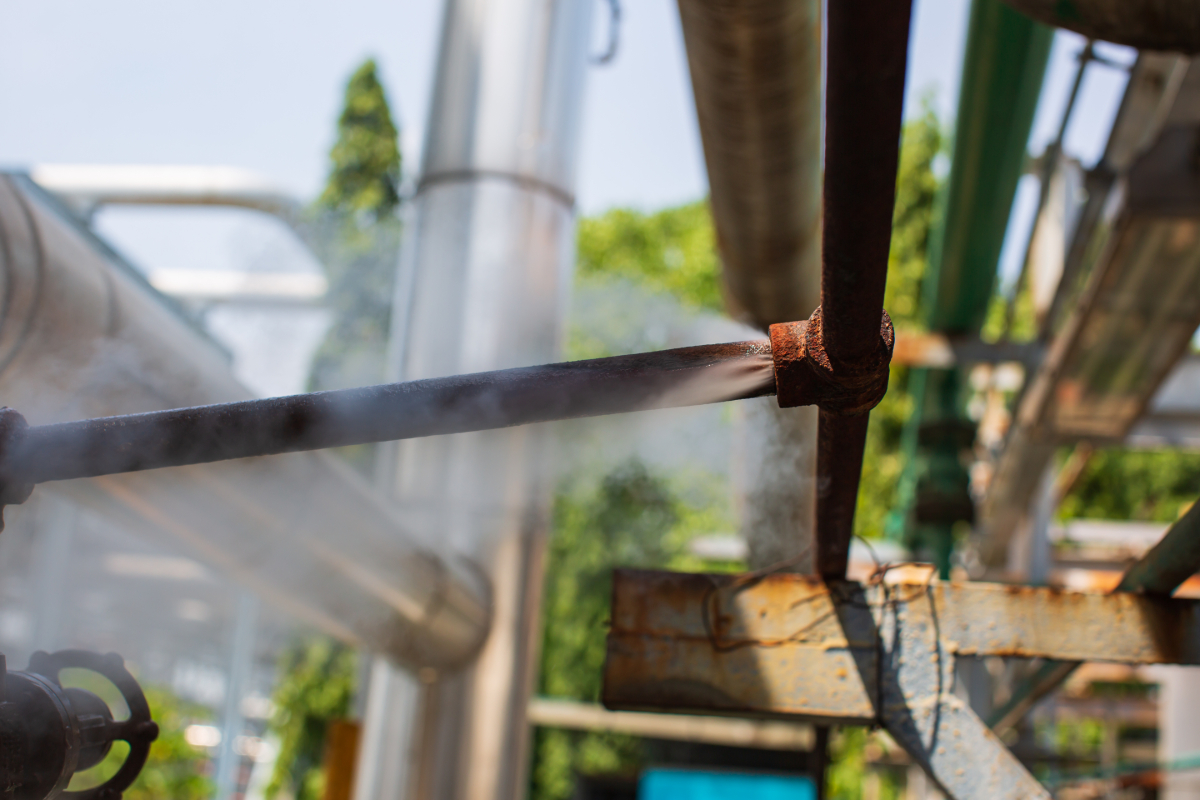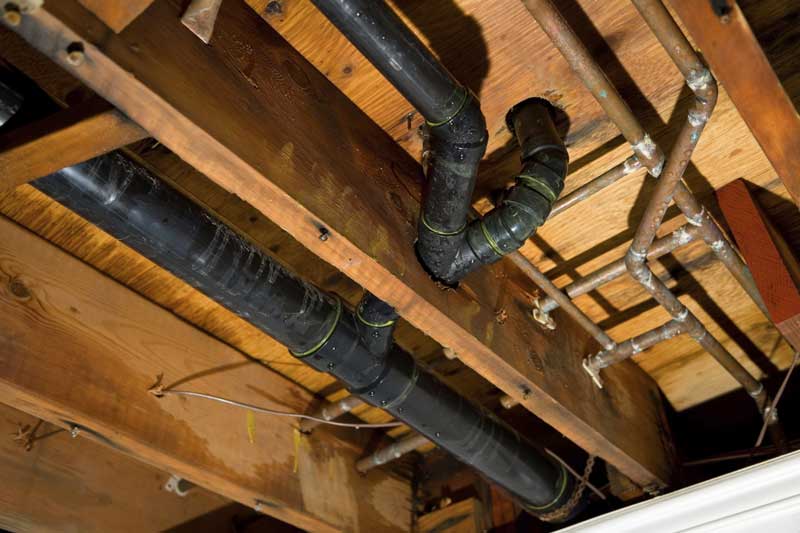Fixing Plumbing Issues in Older Homes: Practical Techniques
Fixing Plumbing Issues in Older Homes: Practical Techniques
Blog Article
Any individual has got their private assumption with regards to Common Plumbing Problems in Older Homes.

Older homes often feature beauty, personality, and history, but they can additionally bring a host of plumbing concerns. Whether you're taking care of aging pipelines, low tide pressure, or leakages, knowing just how to deal with these common issues is crucial to preserving a secure and practical home. In this overview, we'll explore the normal pipes difficulties encountered by older homes and supply useful remedies to keep your pipes in top shape.
Recognizing Usual Plumbing Issues
Aging Pipelines
One of one of the most usual concerns in older homes is maturing pipelines. Depending on the period in which your home was built, the pipelines might be made from materials that have actually deteriorated in time, such as galvanized steel, cast iron, or even lead. These products can rust, become weak, or create leakages, resulting in water damage and potential health hazards.
Water High Quality Testing
Older pipelines can affect the top quality of your water. Conduct a water high quality examination to check for pollutants such as lead, corrosion, or other impurities that might be introduced by aging pipes.
Solutions for Typical Plumbing Issues
Changing Aging Pipes
If your home has old, degrading pipes, think about changing them with modern-day products like copper or PEX. This can be a significant financial investment, however it will avoid future issues and improve the security and reliability of your plumbing system.
Repairing Low Water Stress
To repair low tide pressure, start by cleaning or changing old fixtures and removing mineral accumulation in the pipes. If the problem continues, it may be essential to replace sections of corroded pipelines.
Fixing and Replacing Leaking Pipes
For little leakages, you can utilize pipe clamps or epoxy putty as a short-term repair. Nonetheless, it's ideal to change dripping pipelines totally to avoid further damages.
Updating Components
Updating old components to modern-day, water-efficient models can improve your home's pipes efficiency and lower water intake. Seek components with the WaterSense label for the best performance.
Taking Care Of Pipe Deterioration
If your pipes are corroded, changing them with corrosion-resistant materials like copper, PVC, or PEX is the best remedy. Normal assessments and water high quality maintenance can aid avoid even more corrosion.
Low Tide Pressure
If you're experiencing low water stress, maybe due to mineral deposits, corrosion inside the pipelines, or old components that are no more working successfully. This can be a significant hassle, especially in locations like showers and sinks.
Dripping Pipes
Leakages are an additional regular problem in older homes, typically caused by rusty or worn-out pipes. Also small leakages can result in significant water damage, mold and mildew growth, and increased water costs otherwise resolved quickly.
Outdated Components
Out-of-date plumbing components such as faucets, toilets, and showerheads not only look old yet might likewise be less reliable, vulnerable to leaks, or incompatible with contemporary plumbing standards.
Pipeline Corrosion
Corrosion is an usual problem in older pipelines, especially those made from galvanized steel or actors iron. Corroded pipelines can restrict water circulation, trigger discoloration, and ultimately lead to leakages or pipeline bursts.
Analyzing the Condition of Your Plumbing
Inspecting Noticeable Pipelines
Begin by inspecting any kind of visible pipelines in your home, such as those in cellars, crawl spaces, or under sinks. Look for indications of corrosion, leakages, or rust, which can suggest underlying concerns.
Checking for Leakages
Look for leaks by examining areas around taps, commodes, and under sinks. You can additionally check your water meter prior to and after a duration of no water utilize to detect hidden leakages.
When to Call a Specialist
While some plumbing issues can be managed with do it yourself services, there are times when it's ideal to call in an expert. If you're managing major leaks, substantial deterioration, or are uncertain concerning the problem of your pipes, a certified plumbing technician can give expert analysis and fixing.
Preventive Upkeep Tips
Regular Evaluations
On a regular basis evaluate your pipes system for indicators of deterioration. Capturing problems early can protect against pricey repairs down the line.
Water Pressure Regulation
Ensure your water stress is within the recommended variety to prevent worrying your pipes and fixtures. A plumbing professional can install a pressure regulator if needed.
Water High Quality Upkeep
Set up water filters or conditioners if your water high quality is poor. This can safeguard your pipes and fixtures from damage triggered by hard water or pollutants.
Positive Pipe Replacement
If your home has very old pipes, think about positive replacement before significant issues occur. This can conserve you from emergency repair work and water damage.
Conclusion
Managing pipes problems in older homes requires a combination of alertness, preventative upkeep, and timely upgrades. By comprehending the typical challenges and knowing when to look for expert help, you can guarantee your pipes system stays practical and reliable for several years ahead.
Common Plumbing Issues in Older Homes and How to Fix Them
Owning an older home in Australia comes with its unique charm and a set of challenges, especially when it comes to plumbing. The Sunshine Coast has many older properties that can harbour plumbing problems that aren t just inconvenient but potentially costly. Here s a look at some common plumbing issues in older homes and expert advice on how to handle them.
Outdated Piping Materials
Many older homes were built with galvanised steel, cast iron, or even lead pipes, materials that are far from ideal by today s standards. Galvanised pipes are prone to corrosion and clogging, while lead pipes pose serious health risks.
How to Fix:
Replacing old pipes is a job for a professional. Upgrading to copper or PVC piping not only enhances water quality and flow but also increases the property s safety and value. If you suspect your home has outdated materials, a licensed plumber can conduct a thorough inspection and recommend the best course of action.
Corrosion and Pipe Degradation
Over time, exposure to water and minerals can cause pipes to corrode, leading to leaks, bursts, and water contamination. Corrosion is especially common in homes over 50 years old.
How to Fix:
Regular inspections can catch early signs of corrosion. If corrosion is found, the affected section of piping often needs to be replaced. For homes with extensive corrosion, a complete plumbing overhaul might be necessary. It s crucial to consult with a plumbing expert to understand the extent of the issue.
Tree Root Intrusion
Older neighbourhoods usually have mature trees whose roots can intrude into pipe lines, causing blockages or damage. This is particularly problematic for sewer lines, where roots seek out water sources.
How to Fix:
A plumber can use a specialised camera to inspect sewer lines for root intrusion. If roots are a problem, methods like root cutting or hydro-jetting can clear the obstruction. In severe cases, part of the pipe may need replacing. Consider root barriers around the piping to prevent future issues.
Inadequate Water Pressure
Low water pressure in older homes can be due to various factors, including corroded water lines, sediment build-up in pipes, or outdated fixtures.
How to Fix:
First, check if the low pressure is isolated to one area or throughout the house. Replacing old fixtures can sometimes resolve the issue. However, if the problem is more widespread, it might be due to sediment or corrosion. Flushing the system or replacing the affected pipes usually restores normal pressure. Again, a professional assessment is advisable.
Outdated Fixtures
Older homes often feature fixtures that are not only visually dated but functionally inefficient. This includes everything from toilets and taps to showerheads and washing machine hoses.
How to Fix:
Updating these fixtures can improve both water efficiency and the aesthetic appeal of your home. Modern fixtures are designed to conserve water, which can significantly reduce your water bill and lessen your environmental impact.
Conclusion
Maintaining the plumbing in an older home requires a proactive approach. Regular checks and updates are key to preserving these beautiful properties. If you re facing plumbing issues in your older home, it s best to call on experienced professionals like Green & Gold Plumbing & Gas. With the right expertise, even the most daunting plumbing problems can be resolved, ensuring that your home s character is maintained while its functionality is enhanced.
https://gandgplumbing.com.au/common-plumbing-issues-in-older-homes-and-how-to-fix-them/

As a keen reader on Plumbing Issues in Older Properties and How to Fix Them, I figured sharing that short article was a smart idea. Sharing is caring. Who knows, you may very well be doing someone a favor. I am grateful for your time. Come back soon.
Browse Website Report this page